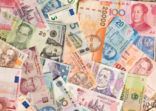Assets of exchange-traded funds in China grew 53.4% to RMB 707.6bn ($105.4bn) in 2018, according to a Cerulli Associates report.
Net inflows (excluding money market ETFs) amounted to RMB 190.2bn, which is the highest in the past seven years, according to the report.
By comparison, in 2017 ETFs available onshore in China had net outflows of RMB 3.5bn and in 2016, net inflows of RMB 33.5bn in 2016.
“Passive products have never gained as much traction as they did in 2018 and 2019 to date, thanks to market movements and managers’ consistent efforts to educate investors on these products, especially after the market turbulence in 2015,” Hui Miao, senior analyst at Cerulli, said in the report.
“However, it may be too early to tell whether they are becoming mainstay products, because many investors seem to like trading in ETFs, rather than investing in them for the long term.”
A number of fund managers have already developed new passive strategies, according to the report. These include China Merchant Fund Management and Guotai Asset Management, which applied for enhanced index ETFs. Enhanced (or active) ETFs aim for 0.75%-1.00% of annualised excess returns with tracking error of 0.75%-1.25% versus their benchmarks.
Convertible bonds and fixed income
The report added that convertible bond funds were also popular in China in 2018, with inflows of around RMB 1.3bn, which compares to only RMB 100m of inflows in 2017.
Cerulli attributes the inflows to investors seeking safe returns and opportunities to catch a market rebound.
“Some investors and managers saw the falling stock market as an opportunity to seize undervalued stocks. These brought bulk inflows into ETFs, equity funds and convertible bond funds, especially as the stock market showed signs of recovery in the beginning of 2019,” the report said.
Fixed income funds were more popular, however, with net inflows of around RMB 623.4bn in 2018, which compares to net inflows of RMB 80.5bn in equity funds.
Cerulli explained that since China A-shares fell at least 20% last year, many investors rushed to fixed income assets. Besides traditional bond funds, short-term bond and bond index funds were also favoured by investors seeking stable returns and low costs.
Money market funds continued to be most favoured, attracting RMB 806.3bn in inflows, the report noted.
Overall, China’s mutual fund market increased 11.7% to RMB 12.9trn, with net inflows amounting to RMB 1.4trn in 2018.

















